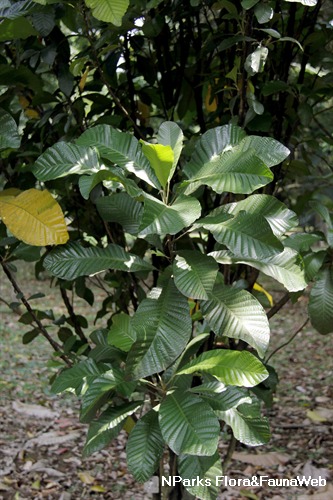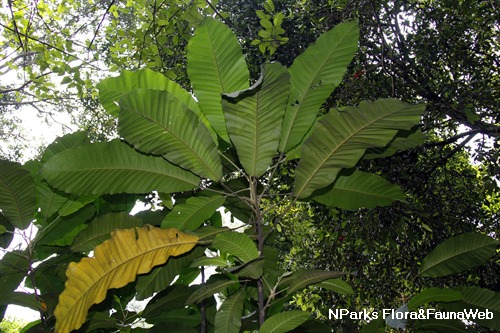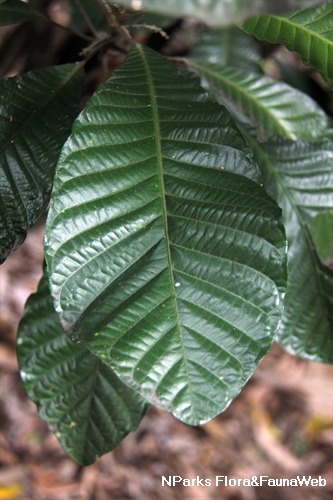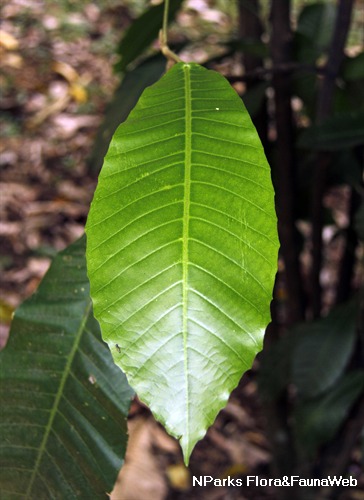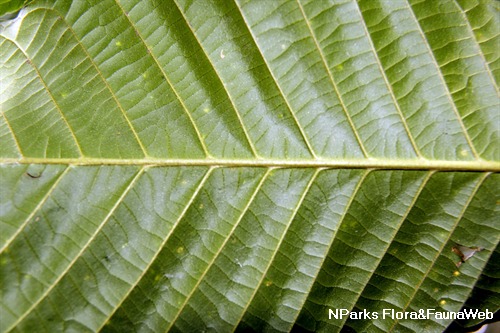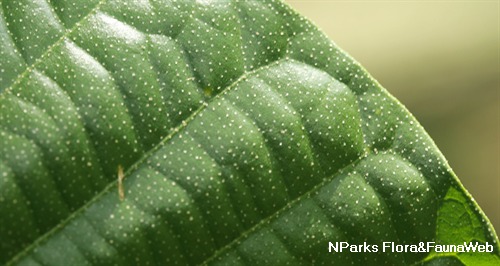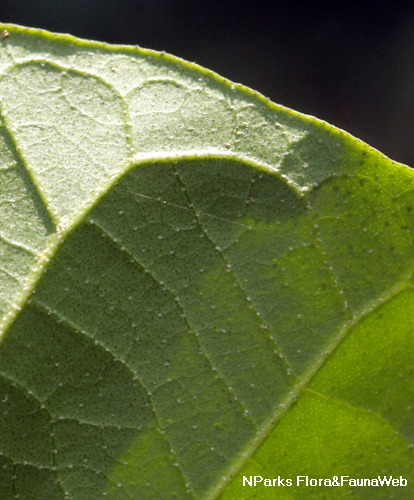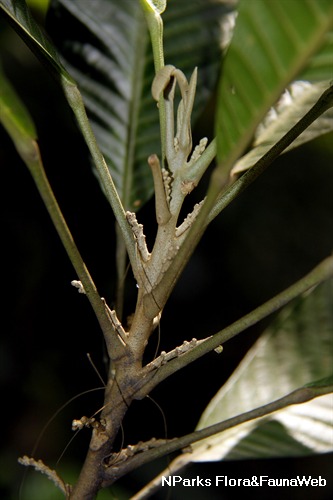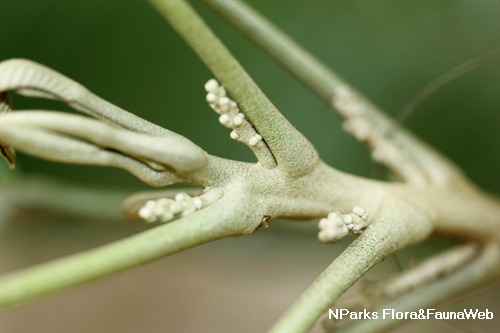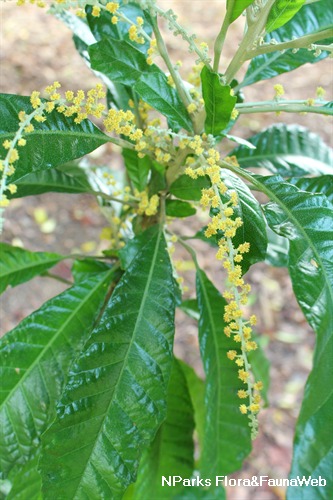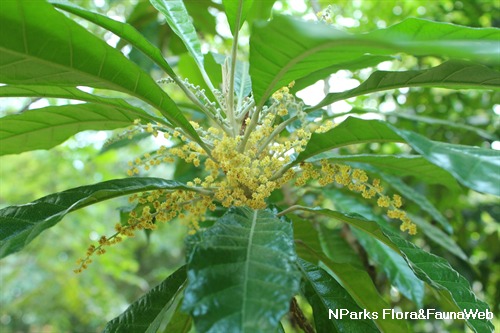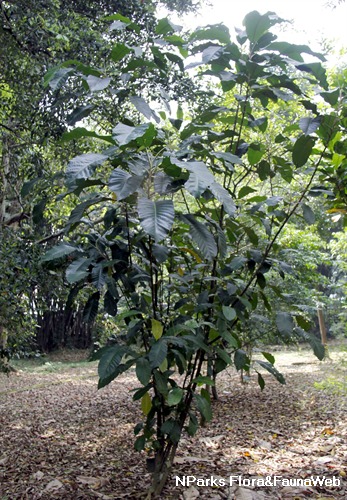
Name
Classifications and Characteristics
| Plant Division | Angiosperms (Flowering Seed Plants) |
|---|---|
| Plant Growth Form | Shrub, Tree |
| Mode of Nutrition | Autotrophic |
Biogeography
| Native Distribution | East Java, Borneo, Philippines, Sulawesi, Papua New Guinea and Australia (Queensland) |
|---|---|
| Native Habitat | Terrestrial |
| Preferred Climate Zone | Tropical |
Description and Ethnobotany
| Growth Form | Shrub or small tree to 15m tall |
|---|---|
| Foliage | Leaves mid - dark green, 6-60cm long by up to 18cm wide, elliptic or oblanceolate to obovate, clustered towards the tips of the branchlets. |
| Flowers | Flowers unisexual (male and female flowers on separate inflorescence) cream - yellow. |
| Habitat | On well drained sites in Primary and Secondary forests, from sea level to 900m asl |
| Ethnobotanical Uses | Medicinal: In Indonesia, the bark and leaves are used to treat a skin diseases and swollen limbs. The bark is also used in Philippines and Thailand in the treatment of snake bites and stomach ailments; in Sulawesi, the sap from the bark is also used to treat eye inflammation. |
Landscaping Features
| Desirable Plant Features | Ornamental Form |
|---|---|
| Landscape Uses | Parks & Gardens, Small Gardens |
Fauna, Pollination and Dispersal
| Pollination Method(s) | Biotic (Fauna) |
|---|---|
| Seed or Spore Dispersal | Abiotic |
Plant Care and Propagation
| Light Preference | Semi-Shade |
|---|---|
| Water Preference | Moderate Water, Occasional Misting |
| Plant Growth Rate | Moderate |
| Rootzone Tolerance | Well-Drained Soils, Fertile Loamy Soils |
| Pest(s) | Chewing Insects, Sucking Insects |
| Propagation Method | Seed, Marcotting |
Foliar
| Foliage Retention | Evergreen |
|---|---|
| Mature Foliage Colour(s) | Green |
Floral (Angiosperm)
| Flower Colour(s) | Cream / Off-White, Yellow / Golden |
|---|---|
| Flower Grouping | Cluster / Inflorescence |
| Flower Location | Axillary |
Image Repository
Others
| Master ID | 31983 |
|---|---|
| Species ID | 6385 |
| Flora Disclaimer | The information in this website has been compiled from reliable sources, such as reference works on medicinal plants. It is not a substitute for medical advice or treatment and NParks does not purport to provide any medical advice. Readers should always consult his/her physician before using or consuming a plant for medicinal purposes. |

